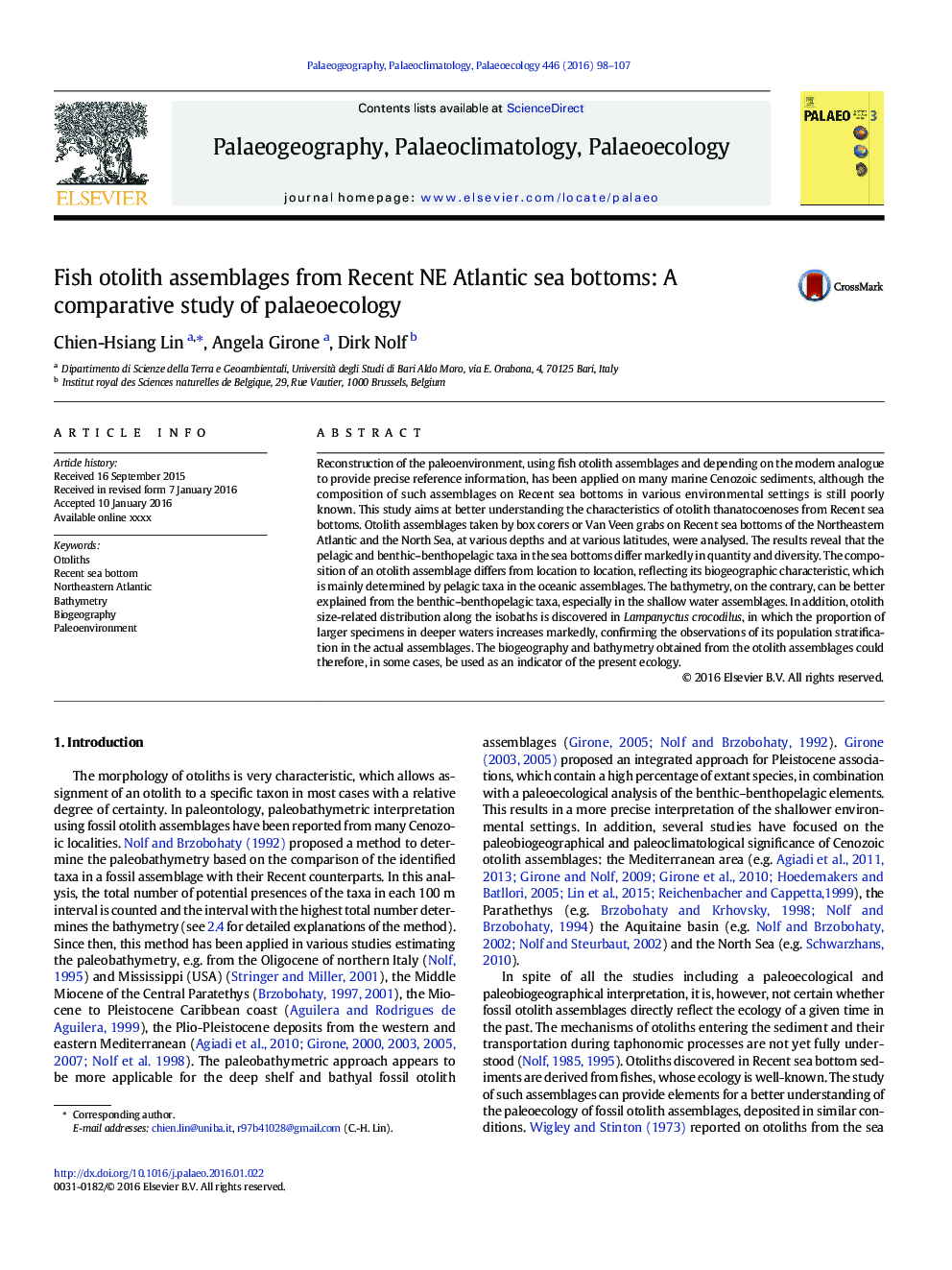| Article ID | Journal | Published Year | Pages | File Type |
|---|---|---|---|---|
| 6349410 | Palaeogeography, Palaeoclimatology, Palaeoecology | 2016 | 10 Pages |
Abstract
Reconstruction of the paleoenvironment, using fish otolith assemblages and depending on the modern analogue to provide precise reference information, has been applied on many marine Cenozoic sediments, although the composition of such assemblages on Recent sea bottoms in various environmental settings is still poorly known. This study aims at better understanding the characteristics of otolith thanatocoenoses from Recent sea bottoms. Otolith assemblages taken by box corers or Van Veen grabs on Recent sea bottoms of the Northeastern Atlantic and the North Sea, at various depths and at various latitudes, were analysed. The results reveal that the pelagic and benthic-benthopelagic taxa in the sea bottoms differ markedly in quantity and diversity. The composition of an otolith assemblage differs from location to location, reflecting its biogeographic characteristic, which is mainly determined by pelagic taxa in the oceanic assemblages. The bathymetry, on the contrary, can be better explained from the benthic-benthopelagic taxa, especially in the shallow water assemblages. In addition, otolith size-related distribution along the isobaths is discovered in Lampanyctus crocodilus, in which the proportion of larger specimens in deeper waters increases markedly, confirming the observations of its population stratification in the actual assemblages. The biogeography and bathymetry obtained from the otolith assemblages could therefore, in some cases, be used as an indicator of the present ecology.
Related Topics
Physical Sciences and Engineering
Earth and Planetary Sciences
Earth-Surface Processes
Authors
Chien-Hsiang Lin, Angela Girone, Dirk Nolf,
